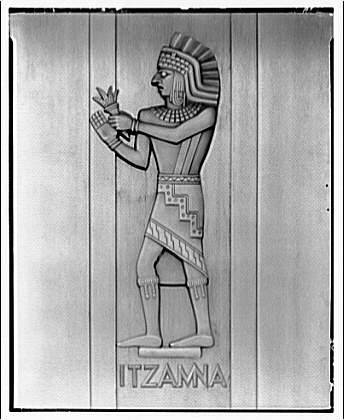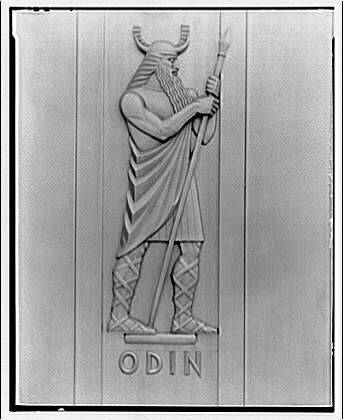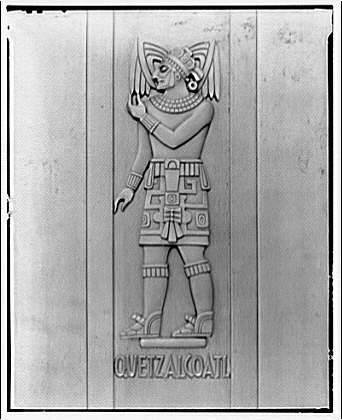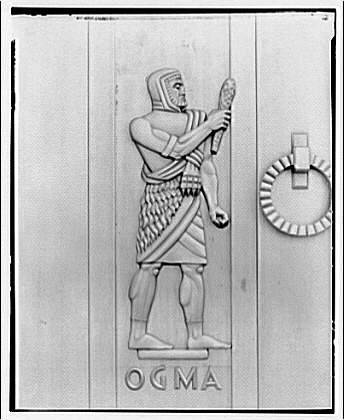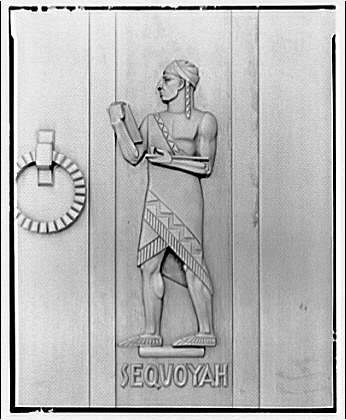#sequoyah
Text









☀️ the name sequoyah 🍁
for anon!
🍁-☀️-🍁 / ☀️-🍁-☀️ / 🍁-☀️-🍁
#stim#stimboard#names#sequoyah#sfw#orange#brown#red#yellow#green#black#flowers#nature#animals#cats#birds#moths#insects#bugs#dice#bees#spiderwebs#plants#crystals#rocks#hands#long nails#shiny#ishy gifs#postish
257 notes
·
View notes
Note
I got a weird prompting to ask for a fun fact about someone who came up with a whole system of writing and then just disappeared. Odd, I know.
Well, you came to the right place, friendo! Today You Learned about Sequoyah.

[I had hoped to do this around Thanksgiving, or for Indigenous Peoples Month, but no one asked for it then so better late than never!]
Okay, maybe you have heard of the man. But if not, here ya go: Sequoyah was a Cherokee man born in Tennessee around the year 1770. When he grew up, his day job was actually being a silversmith, trading with trappers and merchants that came through Cherokee territory. He was pretty darn good at it too, and signed off on all of his work.
Something he noticed, though, was that the Europeans who went through had a written language, and that it was helpful for recording information and talking to people far away. That’s handy, Sequoyah thought. We should have our own written language. Because at that point, Cherokee didn’t have a written language. So, apparently, this man decided to just… make one up.
I say “make one up” as if he came up with it on the spot without thought. No, that’s not what happened. In 1809, Sequoyah began to study English, Greek, and Hebrew, and developed a written system for the Cherokee language. Each symbol represents a syllable, rather than a letter like in the English writing system, leading to a total of over 80 symbols for the alphabet.
Everyone thought he was crazy, but I want to be clear: he did it. This man, a silversmith by trade, created a written language system that within twenty years of its creation became the official written language of the Cherokee Nation.
That’s insane, guys! Where is this guy’s biopic? If you lived in a place with heavy Cherokee history, like the Carolinas, chances are you’ve heard of him–the NC Museum has a small exhibit on him in their section on Cherokee history, and we covered him in school in an article/essay/non-fiction story (I don’t know what we call those things) called “Sequoyah and the Riddle of the Talking Leaves”, but it’s nuts to me that he’s not a more famous figure in American history, considering this.
Sequoyah actually taught the language to his daughter Ayokeh first, so that he could prove that it worked and made sense. Then he spent a ton of time traveling through Cherokee territory to get people to see its usefulness and learn it. Apparently, it worked.
So the US government thought this was awesome and gave Sequoyah a mansion to live in, right? [/sarcasm] No, you can probably guess from the timeline what happened. He went to Washington D.C. to protest and argue with other Native American leaders against the Indian Removal laws the government was enacting, but wasn’t successful, leading to the Trail of Tears. His interactions with other nations led him to decide to try to create another system of writing for all indigenous Americans to use. I don’t think it ever got completed, but someone with more knowledge on the subject can probably tell you more.
He died in Mexico, on an expedition based on the rumor that some Cherokee had gone there–the reunification of the Cherokee people was a big deal to him, after all.
We think he died there, anyway.
See, we don’t actually know where his body is. Officially, he died in 1845 of a lung infection; we don’t know where his body is. The Cherokee funded an expedition to find his grave in the 20th century, but while they found a grave in Coahuila, Mexico, they aren’t sure if it’s his. In 2011, a newspaper argued that actually he wasn’t buried, his skeleton was found in 1903 in a cave in Oklahoma.
I found this out by seeing that he’s listed on Wikipedia’s “List of People Who Disappeared” (which I do not recommend reading if you are sitting alone in a house at night).
Well, he’s still an important national figure. He’s got some recognition–his statue is in the US Capitol, he’s got a sculpture in front of the Cherokee Museum in North Carolina, and! Along with several figures from world cultures credited with inventing/teaching writing, he’s on the doors of the John Adams Building of the Library of Congress.

YMMV may vary on whether or not it’s good that he’s on there with a bunch of mythological figures.
73 notes
·
View notes
Text
The enduring influence of Sequoyah, Cherokee polymath
The Cherokee syllabary was created by Sequoyah, a polymath who didn’t know how to write, but saw English writing and copied the concept to create his own writing system for Cherokee:
Sequoyah’s syllabary later influenced the creation of the Cree syllabary also:
The Cree syllabary in turn was used as the starting point for the Inuit syllabary:
So Sequoyah’s extraordinary influence thrives in communities all across North America today:
#Cherokee#Cree#Inuit#writing#history#language#linguistics#Native#Indigenous#Native American#lingblr#langblr#Sequoyah
110 notes
·
View notes
Photo

Happy Indigenous Peoples’ Day!
The rare collection of laws of the Cherokee Nation shown here was published at Tahlequah, the Cherokee Nation’s capital. It was printed in Cherokee using a syllabary adopted by the Nation in 1825.
The owners of this copy used the page above to list their family members and birthdays. One child, Sequoyah, was likely named after the founder of the Cherokee writing system.
#indigenous peoples day#indigenous#cherokee#cherokee language#syllabary#19th century#sequoyah#cherokee law#american indian law#indigenous law#tahlequah#riesenfeld center#rare books#umn law#university of minnesota law#annotation
37 notes
·
View notes
Text
Cherokee Language Meme 😊
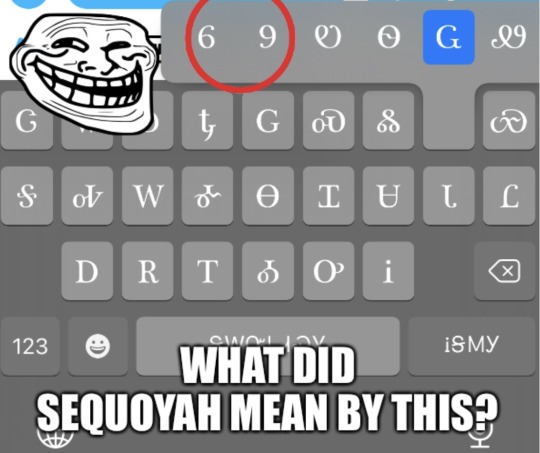
#cherokee#cherokee nation#cherokee language#indigenous languages#indigenous language#endangered languages#endangered language#sequoyah#tsalagi gawonihisdi#tsalagi#tsalagihi ayeli#george gist#george guess#ssiquoya#american languages#american indian#native american#native american lore#only 2000 native speakers!!!!#meme
8 notes
·
View notes
Photo
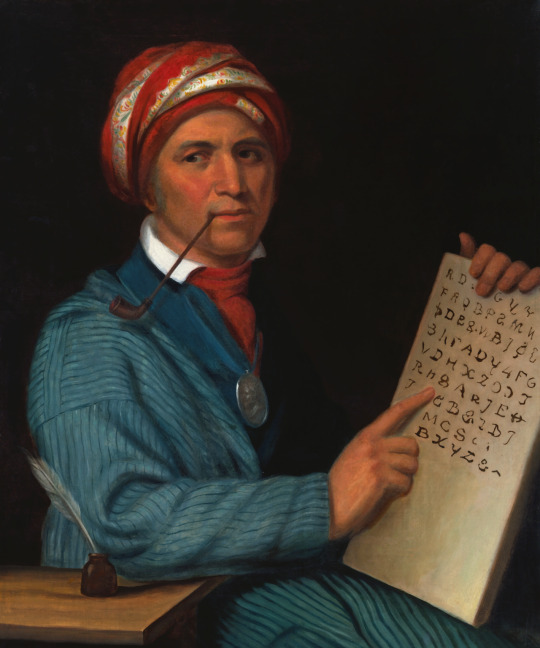
Portrait of Sequoyah by Henry Inman after Charles Bird King.
#sequoyah#cherokee#cherokee language#cherokee alphabet#cherokee syllabary#charles bird king#henry inman#content
17 notes
·
View notes
Text
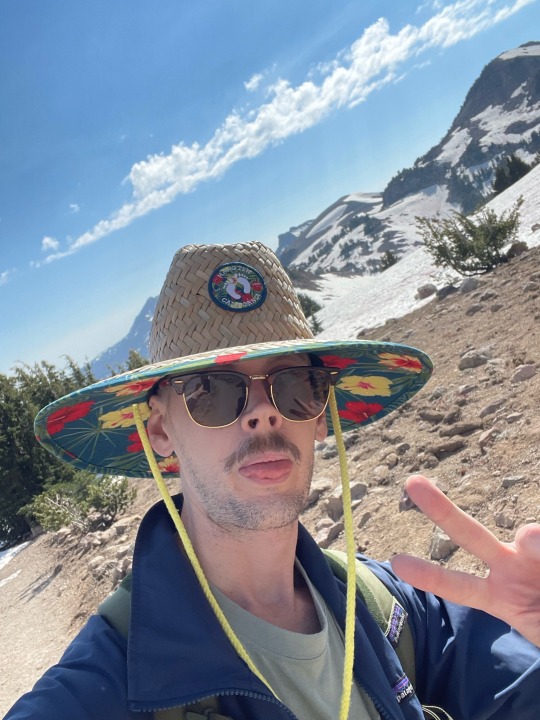



4 parks in 4 days!
4 notes
·
View notes
Photo
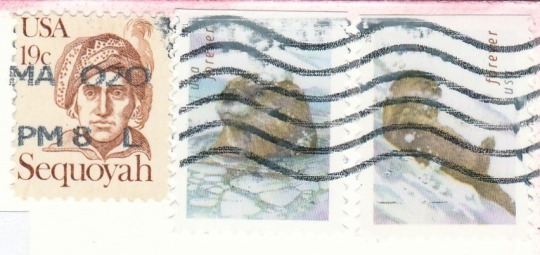
#stamp#usa#america#usStamp#americanStamp#snailmail#postcrossing#animalStamp#otter#peopleStamp#sequoyah
2 notes
·
View notes
Photo

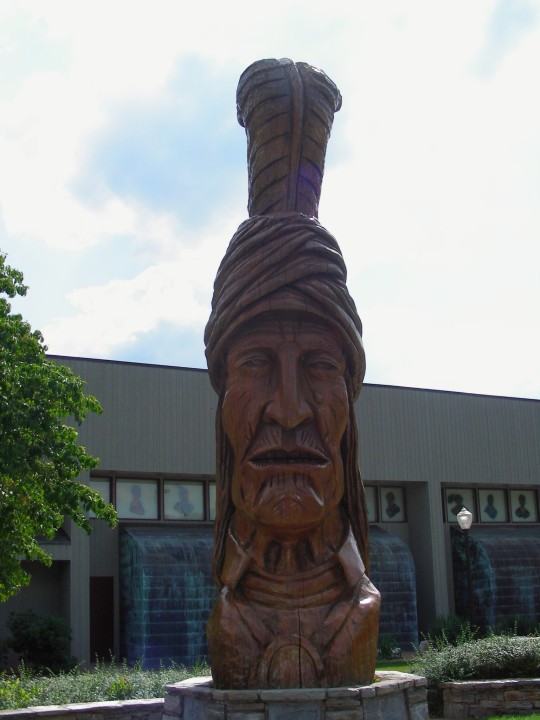
Initial issue of the Cherokee Phoenix was the first periodical to use the Cherokee syllabary, invented by Sequoyah, on February 21, 1828.
#Cherokee#North Carolina#sign#Green Onion Pancake#wood carving#USA#Cherokee Phoenix#Cherokee syllabary#Sequoyah#first use#travel#21 February 1828#195th anniversary#US history#native american#Native American history#original photography#vacation#summer 2009#tourist attraction#landmark#cityscape#small town#Appalachian Mountains
2 notes
·
View notes
Text
American Auto Trail-Dixie Highway (Calhoun to Dalton GA)
American Auto Trail-Dixie Highway (Calhoun to Dalton GA)
https://youtu.be/fE1op8yeVM4
This American auto trail explores the former route of the 1920s Dixie Highway, from Calhoun, Georgia, north to Dalton.
This American auto trail explores the former route of the 1920s Dixie Highway, from Calhoun, Georgia, north to Dalton. For more of our Auto Trails and Slow Travels guides, available in print or eBook format, use one of the links below: AmazonLulu PressSmashwords Follow us on Twitter (X) for video posts or visit our webpage at www.autotrails.net . Camera: Sony Active Camera FDR-X3000Vehicle:…
youtube
View On WordPress
#4K#american history#Auto trail#Calhoun#cherokee#Dalton#dixie highway#georgia#road travel#Sequoyah#Sherman#slow travel#Youtube
0 notes
Text
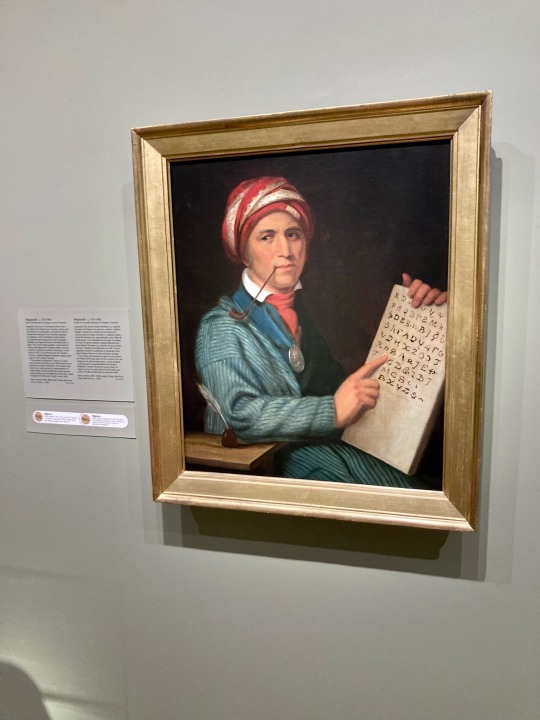
#Sequoyah#Cherokee#Cherokee syllabary#language#Native America#portrait#National Portrait Gallery#Smithsonian#Washington DC
0 notes
Text

A man of his words
Sequoyah, Henry Inman (Copy after Charles Bird King), 1830, National Portrait Gallery, Smithsonian Institution
#art history#art history memes#dad jokes#punny#puns#punsarelikeonions#art meme#museum nerd#Sequoyah#language#alphabet
0 notes
Text
How Tennessee got its name

Tennessee is a long fairly narrow state. Obeying the speed limit, two hours travel, about 120 miles, will get you from top to bottom and 6 hours from Memphis to Pigeon Forge in the Smoky Mountains National Park. That's about 450 or so miles to the North Carolina border. Eight states border us, Kentucky and Virginia to the north, North Carolina to the east, Mississippi, Alabama, and Georgia in the south, Arkansas and Missouri along the Mississippi River in the west.
There are 95 counties in total, but this is about one in particular, Monroe. In olden days Monroe was part of the homeland of the Overhill Cherokee. It's also the birthplace of Sequoyah, inventor of the Cherokee alphabet. This scholar created the alphabet using Latin and Cyrillic letters, the result being the rates of literacy among Cherokees rose significantly, helping preserve their language and culture. Born in 1770 this was quite an accomplishment considering that Native tribes and White settlers of the time were most likely not well educated and usually separated, either by choice or location.
Having been brought up in Memphis I knew very little about the Cherokee, our location was mostly Chickasaw and Shawnee, it's been a treat to dive into the rabbit hole of research on a most interesting man. Sequoyah had many different jobs in his lifetime, one was as a as a representative of the Cherokee Nation in Washington D.C. Sequoia trees are named after him, just a different spelling. If you're ever passing by, consider stopping at the Sequoyah Birthplace Museum, it's on Tennessee Route 360. It's now on my list of places in my state I'd like to visit.
And now to our state name. One of the Cherokee capitals was named Tanasi which later became the English spelling of Tennessee.
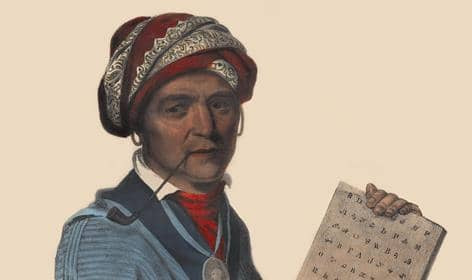
I've pulled information from many sources, so I only take credit for pulling it all together.
BTW, Monroe County is also home of America's largest underwater lake, called the Lost Sea. There are tours and a boat ride.
0 notes
Text
Because he was a blacksmith, Sequoyah began by devising an accounting system to help him keep track of his customers' debts.
"Guns, Germs and Steel: A Short History of Everybody for the Last 13,000 Years" - Jared Diamond
#book quote#guns germs and steel#jared diamond#nonfiction#sequoyah#blacksmith#accounting#debt#language#linguistics#writing#cherokee
1 note
·
View note
Text
He initially devised 200 syllabic signs and gradually reduced them to 85, most of them for combinations of one consonant and one vowel.
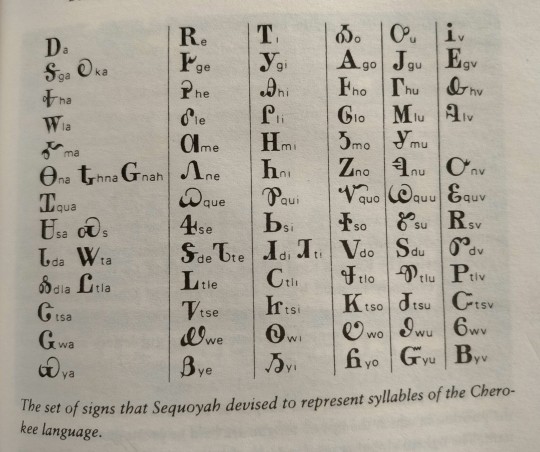
"Guns, Germs and Steel: A Short History of Everybody for the Last 13,000 Years" - Jared Diamond
#book quotes#guns germs and steel#jared diamond#nonfiction#writing systems#language#linguistics#cherokee#sequoyah#alphabet#vowel#consonants
0 notes

